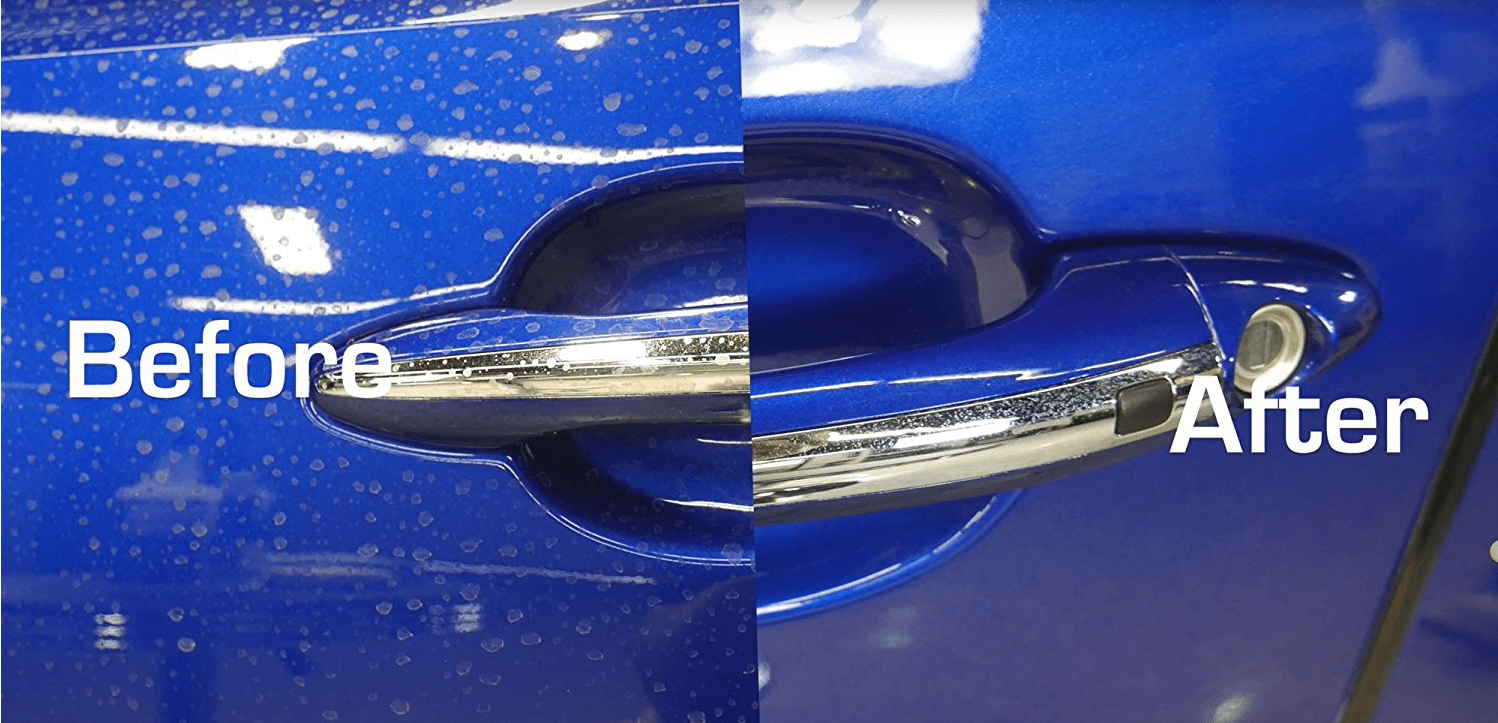How To Remove Water Spots From Car Window

Ah, the dreaded water spot. Those unsightly blemishes on your car's windows that stubbornly cling on, obscuring your view and diminishing that pristine shine. We've all been there, especially after a rainstorm or a trip through an automatic car wash with less-than-perfect drying capabilities. But fear not, fellow gearheads! Removing these mineral deposits doesn't require a herculean effort or a trip to a detailer. This guide will arm you with the knowledge and techniques to banish water spots from your glass, leaving it sparkling and crystal clear. And just like the subtle differences between a Porsche 911 Carrera and a Carrera S, the method you choose will depend on the severity of the spotting and your personal preference.
Understanding the Enemy: Water Spot Types
Before we dive into the removal process, it's crucial to understand the different types of water spots. This helps you choose the most effective approach. Think of it like choosing the right tool for the job – you wouldn’t use a wrench to tighten a bolt that needs a socket, would you?
- Hard Water Spots: These are the most common and are caused by mineral-rich water (calcium, magnesium, etc.) evaporating on the glass. They appear as white, chalky deposits. These are usually removable with DIY methods.
- Etched Water Spots: These are the more aggressive type, often caused by acidic rain or prolonged exposure to hard water. The minerals actually etch into the glass surface, making them more difficult to remove. Think of it like a light scratch on paint – you'll need something more abrasive.
The Arsenal: Cleaning Methods & Products
Now for the fun part: selecting your weapons of choice! We'll explore several methods, ranging from gentle cleaning to more aggressive techniques.
1. The Vinegar Solution: The "Inline Six" of Water Spot Removal
Simple, effective, and readily available. White vinegar's acidity helps dissolve mineral deposits.
How to: Mix equal parts white vinegar and distilled water in a spray bottle. Spray the affected area and let it sit for a few minutes. Wipe clean with a microfiber cloth. Repeat if necessary.
Pros:
- Cheap and readily available.
- Environmentally friendly.
- Effective on mild water spots.
Cons:
- May not be effective on etched water spots.
- Vinegar smell can be unpleasant (though it dissipates quickly).
2. Commercial Water Spot Removers: The "Turbocharged Four" Option
These are specifically formulated to dissolve water spots and often contain surfactants and mild abrasives.
How to: Follow the manufacturer's instructions. Generally involves spraying the product on the glass, letting it dwell for a short period, and wiping it clean with a microfiber cloth.
Pros:
- Often more effective than vinegar on stubborn water spots.
- Specifically designed for car glass.
Cons:
- Can be more expensive than DIY methods.
- Some products may contain harsh chemicals. Always test in an inconspicuous area first.
3. Polishing Compounds: The "Big Block V8" Approach (Use with Caution!)
For etched water spots, you might need to resort to polishing compounds designed for glass. This is the most aggressive method and should be used as a last resort.
How to: Apply a small amount of polishing compound to a microfiber applicator pad. Gently rub the affected area in a circular motion. Wipe clean with a clean microfiber cloth. Repeat if necessary. Consider using a machine polisher for larger areas and more stubborn spots, but only if you have experience.
Pros:
- Most effective method for removing etched water spots.
Cons:
- Can potentially scratch the glass if used improperly.
- Requires more skill and effort.
- Considered abrasive and could remove any tinting/coating applied to the glass.
Spec Table: Product Comparison
| Method | Cost | Effectiveness (Mild) | Effectiveness (Etched) | Ease of Use | Potential Risks |
|---|---|---|---|---|---|
| Vinegar Solution | Low | High | Low | High | None (typically) |
| Commercial Water Spot Remover | Medium | Medium-High | Medium | High | Potential for chemical damage |
| Polishing Compound | Medium-High | High | High | Low | Potential for scratching |
Real-World Driving Impressions: Choosing the Right Method for Your Ride
Just like how a Miata handles differently than a Mustang, each water spot removal method has its strengths and weaknesses. For my daily driver, a Honda Civic, I've found that the vinegar solution works perfectly for routine maintenance after a car wash. However, after a particularly harsh summer rain, a dedicated water spot remover might be necessary. For my classic Porsche 911 (air-cooled, naturally!), I'm extremely cautious and would only consider polishing compound if absolutely necessary and only by a professional detailer to preserve that original glass!
Prevention is Key: The Detailing Secrets
The best way to deal with water spots is to prevent them in the first place! Here are a few tips:
- Dry your car immediately after washing: Use a microfiber towel or a leaf blower to remove water before it evaporates.
- Apply a sealant or wax to your windows: This creates a protective layer that prevents water spots from adhering to the glass.
- Park your car in a garage or under a carport: This shields it from rain and other environmental contaminants.
Always remember to test any product or method in an inconspicuous area first. Better safe than sorry!
So, there you have it – a comprehensive guide to conquering those pesky water spots. Now, get out there and make your windows shine like a showroom-fresh McLaren! And now for the fun part... let's spark a debate! Which is better for removing water spots: distilled white vinegar or apple cider vinegar? Let the comments commence!
